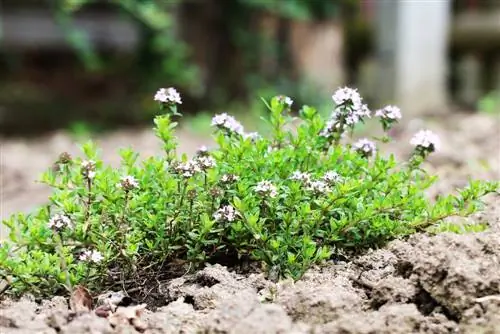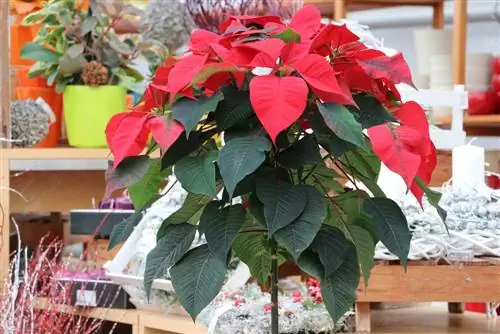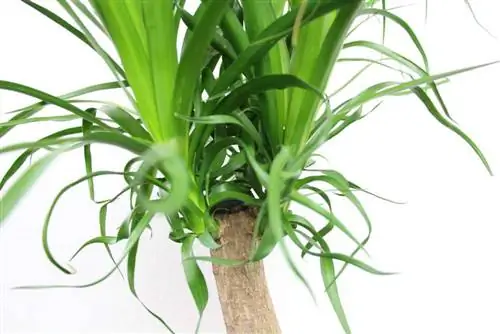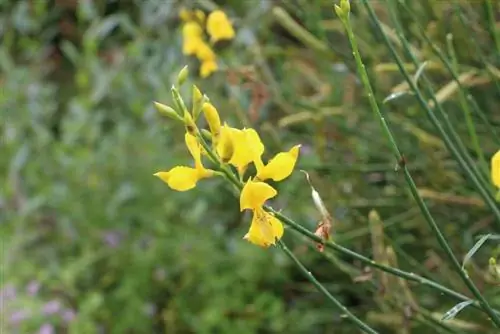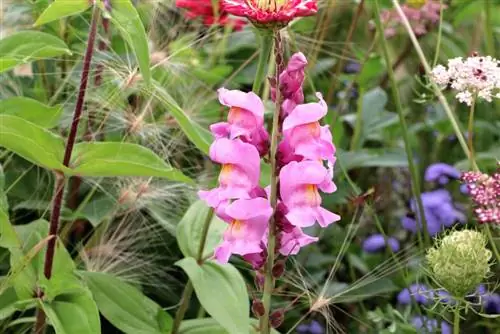- Author admin [email protected].
- Public 2023-12-17 03:39.
- Last modified 2025-01-24 12:45.
Thyme is one of the easy-care culinary herbs. If the location is sunny and the substrate is permeable, it can be kept in a herb bed or in a pot on the balcony or terrace. However, the cold, wet German winter is a problem for the Mediterranean herb, as thyme cannot tolerate waterlogging at all and only tolerates frost to a limited extent. That's why you should protect thyme from rain, wind and frost in winter.
Winter-hardy thyme varieties
When it comes to overwintering thyme, the first thing to ask is the variety, because within the thyme genus (botanically Thymus) there are a good 200 varieties. And some of them also survive the German winter in the garden bed. The winter-hardy varieties that can survive all temperatures down to minus 20 degrees Celsius in the bed include:
- True thyme (Thymus vulgaris)
- Cushion thyme (Thymus doerfleri)
- Scented thyme (Thymus odratissimus)
- Cascade thyme (Thymus longicaulis)
- Sand thyme (Thymus erpyllum)
Tip:
Only pure thyme varieties survive the cold season in the bed. If it is a hybrid, then caution is advised. Because they are not necessarily completely hardy.
Hardy thyme hybrid
The hardy thyme hybrids include:
- Thymus vulgaris “Compactus”
- Thymus puledioides “Coccineus”
- Thymus vulgaris “Tabor”
- Thymus puledioides “Orange Carpet” (Common Thyme)
Overwintering in the bed
Although the cold doesn't really affect the completely winter-hardy thyme varieties, you should still take a few precautions for the cold season. Because the enemy of the thyme in the German winter is moisture. It is not well tolerated by the herb at all.
Tip:
When planting the thyme, place it slightly higher in the herb bed. This means that rainwater can drain off easily in winter.
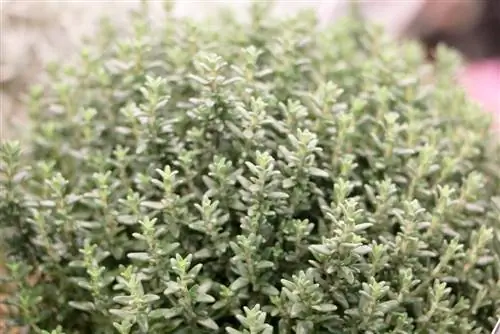
If it rains constantly, you should also protect completely winter-hardy thyme. A good rain protection for the plants is to cover them with spruce or fir branches.
Cold protection
In harsh locations or in constant bitter cold, you should protect the planted thyme from the low temperatures as a precaution. Needle twigs or a breathable fleece are recommended here.
Care
In addition to protecting them from the cold, wet weather, you should also prepare the plants for the cold season with appropriate care measures:
- Stop fertilizing from mid-August
- don't cut back the plants from mid-August
These two care measures are intended to prevent the thyme from producing any more fresh shoots, because these no longer ripen until autumn and freeze to death even during autumn cold snaps.
Overwintering in a pot or bucket
If the potted thyme is to spend the winter on the balcony or terrace, the roots of the culinary herb in particular must be protected, as they are helplessly exposed to the constant change of frost and thaw behind the thin wall of the planter. This change in temperature can cause the cell walls in the plant tissue to burst, which subsequently leads to the death of the plant. The options available for protection against temperature fluctuations and cold depend on the size of the planter.
Thyme in a pot
If thyme is grown in a pot, the pot must be well packed to protect the roots. For planters with a diameter of over 30 centimeters, you should take the following precautions:
- Pack the tub tightly with bubble wrap
- Place the planter on a wooden block or on a Styrofoam plate (to prevent cold feet)
- Cover the substrate with wood wool or coniferous twigs
Tip:
Leaves are only partially suitable for covering the substrate, as they are not very permeable to air and can easily rot.
Since moisture is one of the thyme's biggest enemies, you should place it in a location that protects the plants from rain. A house wall with a southern orientation is ideal because it gives off additional heat.
Thyme in a pot
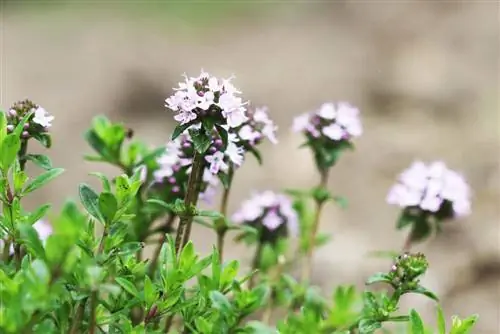
Packing many smaller pots individually is tedious and can also lead to space problems. That's why it's easiest if you let them overwinter in a wooden box. Proceed as follows:
- Put pots in a wooden box
- Fill the gaps with straw
- Place the box on a thick wooden board, a Styrofoam plate or a piece of insulating mat (against cold feet)
- Cover the wooden box with a mat made of reed or coke fibers (insulates and looks nice)
- Tie your coat securely with a rope
- Cover the substrate with moisture-permeable material (e.g. needle twigs)
- Place the packed wooden box in a location protected from wind and rain
Tip:
If the casing made of reed or coconut fiber is slightly higher than the wooden box, then the plants are also additionally protected from wind.
Care
Keep the plants moderately moist throughout the winter. If necessary, water a little on frost-free days. Don't prune until next spring.
Wintering in the house
Even if not all thyme varieties are completely hardy, they need a cool location in winter. Therefore, overwintering in heated living spaces is not optimal, as they are usually too warm and too dark.
Tip:
Smaller herb pots can be relocated to a bright, frost-free winter quarters in the fall. A winter garden is ideal. Alternatively, you can also place the pots on the windowsill in the kitchen.

